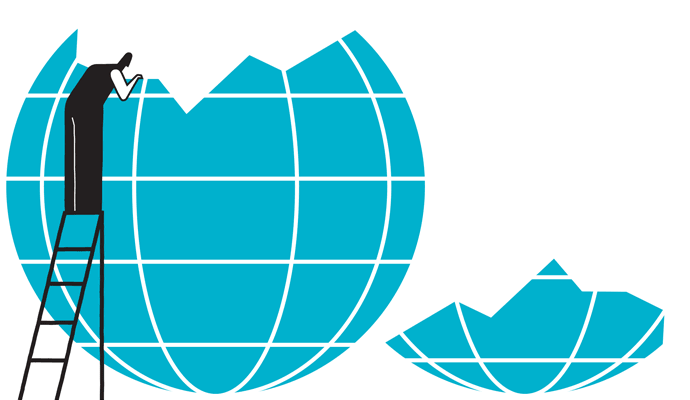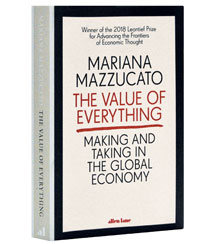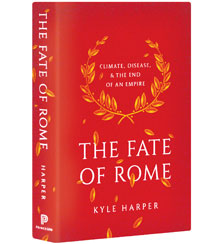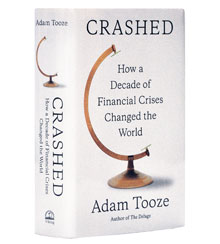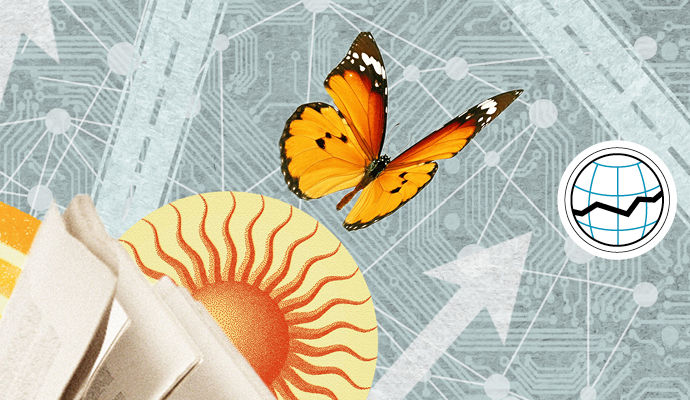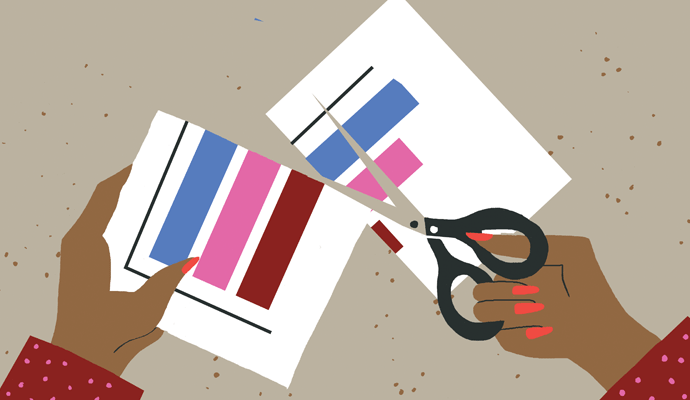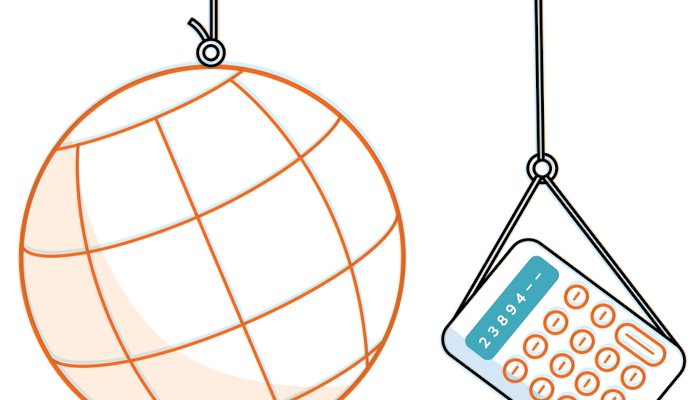Best Business Books 2018: Economics
Value-Added History. See also Top Shelf Picks: Best Business Books 2018.
Mariana Mazzucato
The Value of Everything: Making and Taking in the Global Economy (Allen Lane, 2018)
Kyle Harper
The Fate of Rome: Climate, Disease, and the End of an Empire (Princeton University Press, 2017)
Adam Tooze
Crashed: How a Decade of Financial Crises Changed the World (Viking, 2018)
*A TOP SHELF PICK
Ten years ago, the global financial crisis entered its most intense phase. The anniversary finds the world less engaged in sober reflection than standing dazed by the history that has unfolded since. Still, it is as good an excuse as any to muse on how the world arrived at this bewildering geopolitical moment. This year’s three best business books on economics — one short theoretical work and two magisterial histories (one ancient, one recent) — make excellent accompaniments to such efforts.
A Theory of Value
An inquiry into the nature of value in an economy might not seem an obvious place to begin. Yet The Value of Everything: Making and Taking in the Global Economy, by Mariana Mazzucato, helps establish the intellectual roots of the odd history of the past decade. Mazzucato, an economist at University College London, made a splash in 2011 with the publication of The Entrepreneurial State, which examined the critical role governments play in the development of new technologies. After reprising some arguments from that book, The Value of Everything ultimately goes much further, building toward a broad and intriguing critique of the global economy.
Though it can occasionally seem otherwise, the primary aim of government economic policy is to make everyone richer and better off. But achieving that goal, Mazzucato argues, requires a working theory of how economies generate more value. That question is one that has addled economists for centuries. The book provides an intellectual history of the debate covering the French physiocrats, proto-economists who reckoned that all value could be derived from the production of the agricultural sector; classical economists such as Adam Smith and David Ricardo, who sought a theory of value rooted in the productive application of labor; and the fateful innovations of the neoclassical economists of the late 19th century. The contribution of the latter group, including economic luminaries such as Alfred Marshall and Leon Walras, was to establish a model of an economy in which there is nothing intrinsic at all about economic value. Rather, value is best judged by the price the market will bear.
In Mazzucato’s view, the elevation of this line of thinking has proven hugely consequential. It implies, for example, that the high incomes earned by workers in finance reflect those workers’ high contribution to the economy — and, similarly, that low wages are the just reward for workers whose jobs are of incidental import to the rest of us. It also means that activity that is hard to measure or that takes place outside markets is systematically underappreciated. This includes care work in the home, which most governments opt not to include in their national accounts data. It also includes much of the contribution of government to the function of society.
The result is a skewed version of economic reality, which in turn leads to a skewed set of policy priorities. Government is largely seen as a burden to be minimized rather than an active contributor to prosperity through its funding of infrastructure and research, setting the standards and regulations that allow markets to function, and providing a social safety net. The enormous fortunes piled up by tech billionaires are more easily attributed to innovation and risk taking than to the luck, market power, and state support that are often just as important to their success.
Mazzucato is highly critical of the finance industry. In the millennia prior to the Industrial Revolution, finance-related work was largely seen as parasitic. Not even the great economists of the 19th century considered finance a source of significant value. Yet the shift toward a framework in which money earned is synonymous with value created opened the door to a different perception. As the industry exploded in size after the deregulation of the 1970s and 1980s, national accounts practices also changed. More of the income generated within finance was reclassified as value added (rather than an input cost incurred by final producers). Thus, as the financial sector became ever better at imposing costs on its customers, both GDP and the contribution of finance to it rose.
The strangeness of this dynamic became particularly clear during the financial crisis, as banks paid out billions in bonuses to their workers even as governments were obliged to mobilize trillions of dollars to prevent the industry’s collapse. In 2009, Mazzucato writes, CEO Lloyd Blankfein said, “The people of Goldman Sachs are among the most productive in the world.” They are unquestionably good at what they do. Yet we seem to have lost the ability as a society to judge whether what they do contributes to the common weal in any manner other than generating income for those in the business. We have arrived at this point, Mazzucato’s book suggests, through the atrophying of our ability to judge value by yardsticks other than money.
Empire Falls
The Value of Everything is a relatively short, businesslike book that efficiently guides readers through a number of modern debates. The Fate of Rome: Climate, Disease, and the End of an Empire, by Kyle Harper, is something altogether different. This compelling narrative of the fall of the Roman Empire proves a remarkably timely book for those hoping to understand the present moment.
As Harper, a historian at the University of Oklahoma, is quick to note, the decline of the empire hardly seems under-explained by historians. Its basic trajectory is familiar. Over the course of Rome’s long life the proto-states beyond its frontiers grew in strength and sophistication. Encroachments on Roman territory increased the fiscal demands on the empire and simultaneously reduced the tax base, all while emboldening the barbarians at the gate. As pressure built, Rome could no longer concentrate its resources in response to threats and was overrun.
Yet in retelling this story, Harper highlights several important and underappreciated aspects of Rome’s rise and fall. Rome’s extraordinary growth and eventual decline were closely tied to natural phenomena over which the Romans had little or no control. The Holocene — the geological epoch during which human civilization arose — began with a sharp period of warming at the end of the last ice age, about 12,000 years ago. After that initial heat wave, or since about 8,000 years ago, global temperatures have been on a long downward trend, interrupted by occasional anomalies — including an odd bout of warming that coincided with the apex of the Roman Empire. This remarkably warm and wet period seems to have been an extraordinarily bountiful one for the Mediterranean basin. North Africa and the Levant were far more lush than they are now, and supported agriculture and dense civilization in areas now covered by desert. On Greek mountains, the remains of ancient olive presses have been found at elevations far above those that support olive tree growth today.
Rome’s extraordinary growth and eventual decline were closely tied to natural phenomena over which the Romans had little or no control.
This climatic good fortune contributed to an abundance and resilience that enabled the rise of the empire. But the fates would not smile on Rome indefinitely. The empire’s final centuries occurred as temperatures and precipitation declined, en route to a “little ice age.” This shift was compounded by climate havoc wrought by volcanic activity, and even more dramatically by pandemics. A double blow of viral epidemics preceded the “Crisis of the Third Century,” which saw the near collapse of the empire. The arrival of the plague during the reign of Justinian in 541–542, which probably killed around half of Europe, fatally weakened the Eastern rump of the empire, which had survived the collapse of the West.
Unlike modern civilizations, the Romans had no way of knowing that the climate in which they had thrived was shifting, and had little room to take action to reverse the change. Yet we are only moderately ahead of the Romans in understanding our economic vulnerability to massive climate shifts, particularly given the highly unpredictable nature of interactions between climate change and political instability. And although germ theory, vaccines, and other health advances give us an edge over the Romans in our ability to confront pandemics, the integration of the global economy, which allowed plague to ravage Europe, is more complete today than ever before.
Harper’s book also drives home the way in which economic integration and growing wealth feed on themselves. Contrary to popular belief, the Roman economy was not merely extractive, transferring plunder from conquered territories to the idle masses in the capital. Expansion in trade during the Romans’ reign enabled economic specialization and the spread of knowledge, boosting productivity. Though the Romans never managed to achieve self-sustaining technological progress, real incomes across the empire rose meaningfully thanks to the creation of a broad, stable zone of exchange. Similarly, the size and diversity of the economy added to its resilience in the face of unforeseen threats.
Yet both incomes and resiliency were placed under stress as the empire weakened and shrank. It was not fiscal overreach resulting from decadence that hamstrung the empire so much as the loss of economic potential. The increasing strain posed by this loss reduced the ability of Rome’s leaders to respond to crises of all sorts, until at last the entire edifice fell.
A Global Crisis
A reader moving directly from The Fate of Rome to Crashed: How a Decade of Financial Crises Changed the World, by Adam Tooze, is in for a deeply unnerving experience. The pace and tone of the two historical narratives are strikingly similar, as is the dark sense of foreboding that pervades the storytelling. Tooze’s book is an indispensable history of the past two decades, which escorts the reader from the geopolitical ructions of the early 2000s through the global economic crisis and on to the threats posed to the prevailing global order by political developments in the United States, Europe, and elsewhere. For those who lived through it all, the material will be mostly familiar. Yet the pure density of news across this period made the historical thread devilishly hard to follow in real time. Tooze, a historian at Columbia University, gives this history the exposition it deserves, bringing the period into sharper and more disconcerting focus. His book is the year’s best, and an unforgettable read.
The connective tissue holding Crashed together is its focus on the emergence of a highly integrated transatlantic financial system. This financial system laid the groundwork for the spectacular financial crisis that reached its zenith in 2008. It also provided the bridge from that catastrophe to the ensuing crisis in the eurozone, and acted as a persistent influence on the governments struggling to manage the crises and their aftermath.
As big European banks turned to U.S. money markets for funding, they helped channel capital from around the globe into the U.S. property market — and ensured that the housing bust would have global ramifications. The financial crisis left European banks and sovereigns in a weakened and vulnerable state. Fatefully, it also increased the interdependence between the two, as the European Central Bank (ECB) worked to replace lost money-market funding by lending generously to banks against European sovereign bonds. Those interconnections between European banks and their sovereigns became the conduits along which panic would spread from 2010 to 2012.
Tooze reminds readers how much worse things could very easily have been. So much depended, in so many cases, on last-minute steps away from the brink taken by competent, well-intentioned leaders (a resource now in somewhat shorter supply). Crashed just as often, however, leaves the reader infuriated as it recounts the policy missteps that helped transform the pre-crisis world into the one in which we now find ourselves. The enthusiastically wrongheaded turn toward austerity from 2009 on is well known. The disastrous decision on the part of the ECB not to extend euro swap lines to Central European economies (as the Fed had extended dollar swap lines to the ECB) is less so. Tooze pays it the attention it deserves; the ECB’s decision exacerbated the acute economic pain around the Eastern periphery and led directly to the rise of illiberal governments such as that of Hungary’s Viktor Orban.
Tooze’s narrative brings us, in rather grim fashion, to the geopolitical mess of today, in which transatlantic cooperation has faltered even as the diplomatic challenges presented by Russia and China grow ever more intense. Added to the risks that unavoidably accompany global financial integration is the growing threat that such interconnections will be weaponized. Strikingly, the response to the financial crisis — most notably the way in which the Fed showed itself willing to go to extraordinary lengths to support the dollar-dependent global financial system in its hour of need — helped entrench the dollar and U.S. government debt as the foundation of global finance. That fact looks ever more awkward as the U.S. threatens to entirely abandon the global leadership role that has helped underpin the world economy since the end of the Second World War.
The United States is not Rome, however often the analogy is made. But modern prosperity is built on a set of wildly complex interdependencies. It is hard to know exactly how much resiliency the system has. We can take courage from the fact that the global economy is still here, after the catastrophes of the past decade. But much of the geopolitical goodwill and cooperative spirit that helped prevent a more damaging collapse has been used up. And we cannot really know which is the support that, once broken, will lead to a much more thorough, nastier cycle of disaster. Ten years after the crisis is as good a moment as any for the world to try to regain its bearings, and rethink its direction. There might be other crises. Better be prepared.
Author profile:
- Ryan Avent is economics columnist at the Economist. He is the author of The Wealth of Humans: Work, Power, and Status in the 21st Century (St. Martin’s Press, 2016).


